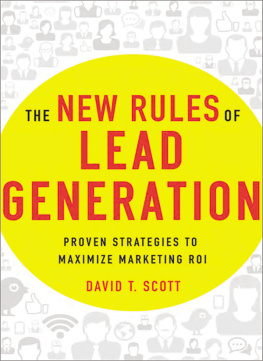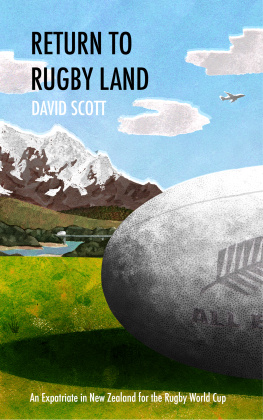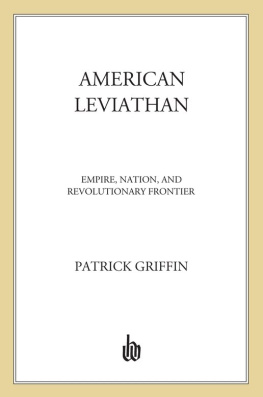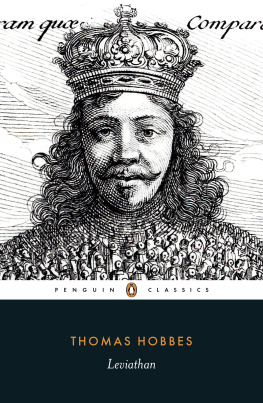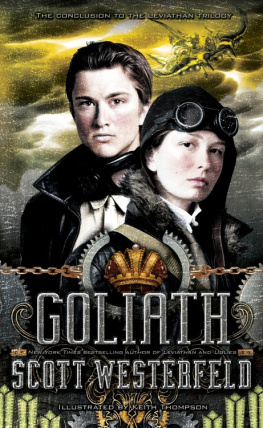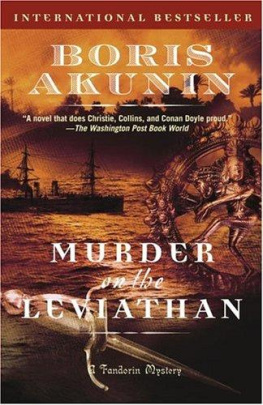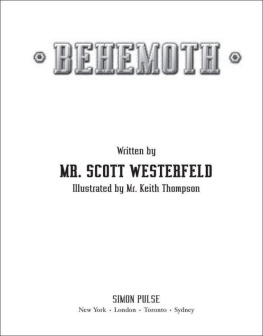David Scott - Leviathan: The Rise of Britain as a World Power
Here you can read online David Scott - Leviathan: The Rise of Britain as a World Power full text of the book (entire story) in english for free. Download pdf and epub, get meaning, cover and reviews about this ebook. year: 2013, publisher: HarperPress, genre: History. Description of the work, (preface) as well as reviews are available. Best literature library LitArk.com created for fans of good reading and offers a wide selection of genres:
Romance novel
Science fiction
Adventure
Detective
Science
History
Home and family
Prose
Art
Politics
Computer
Non-fiction
Religion
Business
Children
Humor
Choose a favorite category and find really read worthwhile books. Enjoy immersion in the world of imagination, feel the emotions of the characters or learn something new for yourself, make an fascinating discovery.
- Book:Leviathan: The Rise of Britain as a World Power
- Author:
- Publisher:HarperPress
- Genre:
- Year:2013
- Rating:5 / 5
- Favourites:Add to favourites
- Your mark:
- 100
- 1
- 2
- 3
- 4
- 5
Leviathan: The Rise of Britain as a World Power: summary, description and annotation
We offer to read an annotation, description, summary or preface (depends on what the author of the book "Leviathan: The Rise of Britain as a World Power" wrote himself). If you haven't found the necessary information about the book — write in the comments, we will try to find it.
Leviathan: The Rise of Britain as a World Power — read online for free the complete book (whole text) full work
Below is the text of the book, divided by pages. System saving the place of the last page read, allows you to conveniently read the book "Leviathan: The Rise of Britain as a World Power" online for free, without having to search again every time where you left off. Put a bookmark, and you can go to the page where you finished reading at any time.
Font size:
Interval:
Bookmark:

For Sarah
CONTENTS


. King Henry VII by unknown Flemish artist, 1505 ( National Portrait Gallery, London. NPG 416)
. From The Image of Irelande by John Derrick, 1581 (Courtesy Edinburgh University Library)
. Armada playing cards, 1588 ( National Maritime Museum, Greenwich, London. PU0214; PU0183; PU0181; PU0179)
. From Narratio regionum indicarum per Hispanos quosdam devastatarum verissima, 1598 (Courtesy Bibliothque Nationale de France. BNF C43328)
. Equestrian portrait of Charles I by Anthony Van Dyck, 1633 (Supplied by Royal Collection Trust / HM Queen Elizabeth II 2013. RCIN 405322)
. The Tiger by William Van de Velde the elder, c.1681 ( National Maritime Museum, Greenwich, London. PZ7304)
. View of the beheading of Charles I by unknown artist (Private Collection / Look and Learn / Peter Jackson Collection / The Bridgeman Art Library)
. East India Company Ships at Deptford by unknown artist, c.1660 ( National Maritime Museum, Greenwich, London. BHC1873)
. Dukes plan of New York, 1664 ( The British Library Board. Maps K.Top.CXXI.35. 008318)
. Engraving of London before the Great Fire by Pieter Hendricksz Schut, mid-17th century (Courtesy Guildhall Library, City of London)
. A Representation of the Popish Plot in 29 figures, c.1678 ( The Trustees of the British Museum. All rights reserved. 1871,1209.6512)
. The Common wealth ruleing with a standing Army, 1683 ( The Trustees of the British Museum. All rights reserved. 1868,0808.3297)
. Emblematical Print on the South Sea Scheme by William Hogarth, 1721
. Excise in Triumph, c.1733 (Courtesy of The Lewis Walpole Library, Yale University)
. Idol-Worship or The Way to Preferment, 1740 (Courtesy of The Lewis Walpole Library, Yale University)
. The Lyon in Love, 1738 (Courtesy of The Lewis Walpole Library, Yale University)
. O the Roast Beef of Old England (The Gate of Calais) by William Hogarth, 1748, engraved by C. Mosley (Courtesy of The Lewis Walpole Library, Yale University)
. Beer Street by William Hogarth, 1751
. Gin Lane by William Hogarth, 1751
. The Abolition of the Slave Trade by Isaac Cruikshank, 1792 (Courtesy of The Lewis Walpole Library, Yale University)
. Slaves processing sugar cane, c.166771 ( The British Library Board. C13236-18)
. Fort St George on the Coromandel Coast by Jan van Ryne, 1754
( National Maritime Museum, Greenwich, London. PU1845)
. The Ballance, or The Americans Triumphant, 1766 (Courtesy of The Lewis Walpole Library, Yale University)
. The Mob destroying & Setting Fire to the Kings Bench Prison & House of Correction in St Georges Fields, 1780 (Courtesy of The Lewis Walpole Library, Yale University)
. The Free-born Briton or A Perspective of Taxation, 1786 (Courtesy of The Lewis Walpole Library, Yale University)
While every effort has been made to trace the owners of copyright material reproduced herein, the publishers would like to apologise for any omissions and would be pleased to incorporate missing acknowledgements in future editions.
As Britain entered upon another global war with her old enemy France in the mid-1750s, the Royal Navy took timely delivery of the largest warship in the world. Built at Woolwich Dockyard and launched in 1756, the three-decker Royal George was a vast and intricately designed killing machine. Her construction had taken almost ten years and had consumed the wood of more than 5,000 oak and elm trees. She carried the tallest masts and the greatest spread of canvas of any ship in the navy. A crew of 867 men and boys was needed not only to sail her b ut also to work the hundred guns she moun ted, which included twenty -eight massive full cannon the heaviest pieces of ordnance afloat each firing a hull-smashing 42-pound ball. One broadside alone would throw over 1,000 lb weight of metal. Two broadsides were enough to sink the French 74-gun Superbe at the battle of Quiberon Bay in 1759 the decisive naval engagement of the Seven Years War. Nelsons flagship at Trafalgar in 1805, named Victory to commemorate Britains year of victories in 1759, would be modelled on the Royal George. Ships of the line such as these were the ultimate expression of Britains determination to stamp her naval superiority on every European rival, or indeed combination of rivals. The British would tolerate no balance of power at sea as they would on the Continent. But the Georgian navy served a larger purpose than engaging enemy fleets, for it kept the sea lanes open to the stream of goods to and from Britain that invigorated its industries, powered its economy towards the industrial revolution, and sustained the military expenditure of an altogether deadlier war machine: the British imperial state.
This book is partly about how and why the British and Irish peoples acquired the kind of state that could outdo the French and every other European power; that could build the Royal George and keep her, and hundreds more warships, at sea around the globe for months on end. It is a story that grew to encompass all of Britain and Ireland, and many other lands besides. But it began life in England. And here I must pause to make the familiar confession of English historians writing supposedly British history. It was said of Georgian Britains longest-serving prime minister, Sir Robert Walpole, that his political genius consisted in understanding his own country, and his foible, inattention to every other country, by which it was impossible he could thoroughly understand his own. Though I do not lay claim to Walpoles superlative mastery of his art, there is no doubt that I share his foible. In my own defence I would argue that in writing a narrative history that covers (if only loosely) Britain and Ireland, it is almost impossible to avoid focusing on England. There is no ignoring the fact that England was the largest, the most populous and the most aggressive of the states that occupied the British Isles during the period covered by this book. Events in London and lowland England were bound to exert a greater influence over Scotland and Ireland than the other way round.
This unavoidable Anglocentrism is also apparent in the period I have chosen to cover that is, from 1485 to 1783. Henry Tudors victory at Bosworth in 1485 was, or would become, an event of immense significance in English history, but it looks rather less of a turning-point when viewed from a Scottish or Irish perspective. The capacity of the English to throw their weight around in the British Isles was unusually weak at the end of the fifteenth century a legacy of the Wars of th e Roses. Henrys seizure of the c rown took some time to disturb the pattern of English rule in Ireland, and longer still to make any great impact on the Stuart kingdom of Scotland. By contrast, the cataclysm of the American War of Independence, with which this book ends, reverberated immediately and powerfully across the British Isles. Yet although Bosworth itself was more of an Anglo-French event than a British or Irish one, the year 1485 is of larger significance than simply as a boundary marker between the Plantagenets and the Tudors. Henry VIIs reign (14851509), it is now recognised, did much to reshape and reinvigorate the English monarchy which was, after all, the most powerful political institution in the British Isles. Moreover, the decades around 1500 have often been taken to mark the end of the Middle Ages in Britain and the beginning of a new era, the early modern period. Although historians (myself included) are vague about the timing and nature of this transition, the early modern period is generally assumed to have included the sixteenth and seventeenth centuries, and some, or most, of the eighteenth century in other words, roughly the period covered by this book.
Font size:
Interval:
Bookmark:
Similar books «Leviathan: The Rise of Britain as a World Power»
Look at similar books to Leviathan: The Rise of Britain as a World Power. We have selected literature similar in name and meaning in the hope of providing readers with more options to find new, interesting, not yet read works.
Discussion, reviews of the book Leviathan: The Rise of Britain as a World Power and just readers' own opinions. Leave your comments, write what you think about the work, its meaning or the main characters. Specify what exactly you liked and what you didn't like, and why you think so.


